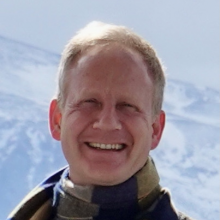1.) Coordinate the research activity among units and research areas working on topics relevant for quantum technologies with cold atoms. The primary objective of AtomQT is to boost interactions and collaborations among scientists and research groups, with the synergy resulting in improved quality and quantity of the output. Quantum technologies based on ultra-cold atoms is an inherently interdisciplinary subject requiring input from a large variety of fields, which range from laser physics and quantum optics to quantum engineering and the physics of many-body systems. It is a key-objective of AtomQT to provide a platform for the efficient exchange of information between these sub-fields, which is crucially needed if Europe is to maintain its leading position in an rapidly evolving field. The most important specific output will be the number of short term exchanges (> 400), communication platforms (website, conferences (> 4), round tables (> 4) etc.) and the reports of the working groups (> 10), especially the roadmaps (2).
2.) Foster the interchange between academia and industry in order to advance the development and adoption of quantum technologies with cold atoms. A recent survey shows strong interest in quantum technologies, from European companies like Bosch, Siemens, Thales, Safran, ASML, Nokia, Airbus and Alcatel Lucent. Also an increasing number of smaller companies work on engineering and realizing quantum devices, ranging from established supporting technologies to the realization of actual quantum devices with cold atoms. It is therefore the second primary objective of AtomQT to promote the industry-academia interchange both through common meetings, working groups, and focused visits of researchers (especially also early-stage researchers) to such companies. An important part of this objective is to increase awareness of intellectual property rights (IPR) and provide guidance and training on identification, protection, exploitation, and management of IPR. The specific output will be a sharp increase in IPR generated (20 patents), in the number of collaborations/partnerships between industry and academia and the number of spinoffs generated.
3.) Promote the dissemination of results beyond the traditional boundaries. The wide dissemination of results is vitally important especially in a rapidly developing field, which is naturally at the border between many different areas of fundamental and technological innovation. An important objective of AtomQT is the support of an interdisciplinary and intersectoral exchange of ideas not only through the dissemination of results via peer-reviewed journals, but specifically through more targeted publications in industry journals, meetings and conferences to communicate novel and state-of-the-art results in the field of cold atom quantum technology to a wider public and stakeholders.
Capacity-building Objectives
One of the main factors that will determine Europe’s success in the second quantum revolution will be the attainment of a critical mass of researchers and research laboratories available. If nothing is done, then Europe risks becoming a second tier market player. Therefore the capacity-building objectives have to focus on exploiting the existing skill base to its maximum and widening it through targeted training and dissemination of results.
1.) Training the next cold-atom generation of quantum physicists. There is a current lack of physicists trained in quantum technologies in general. The primary Capacity-building Objective of AtomQT is to train a new generation of commercially aware physicist skilled in coldatom quantum technologies. This will be done through the organisation of one or two summer schools per year on cold atom technologiestraining a total of 250 young quantum physicists. AtomQT will also organise four conferences on the topic, with special sessions specifically aimed at non-specialists. Furthermore, a targeted exchange scheme will allow early stage researchers to visit other laboratories in both academia and industry. The impact will be a considerably increased European human resource capacity in cold atom quantum technologies.
2.) Improving Capacity through Communication. The expected increase in funding e.g. through the 1B€ FET-Flagship will attract many new research groups into the field. AtomQT puts it as one of its objectives to provide a communication platform for established and new groups. This will be achieved through a series of conferences, through its website (highlights, news, directory of researchers & research groups, industrial interest and a job portal), and through a series of 4-8 topical meetings. Working group 3 of AtomQT has the objective of improving the public’s understanding and appreciation of quantum phenomena and their technological implications. Conversely, communication with a wide audience will help us to identify needs and societal relevance as a main cornerstone of any innovation process and draw on a wide range of competencies.
3.) Improving the European skill base by supporting and promoting geographic and gender balance.One main limiting factor in the implementation of quantum technologies is the limited amount of available brain power. AtomQT aims at improving access to two sources of quantum physicists that are still largely underused: female scientists and those from countries with a smaller research base. Women are extremely underrepresented in quantum physics, e.g. in 2015 less than 7% of invited speakers at quantum conferences were female. A similar bias exists geographically, with only a handful of countries maintaining experiments in cold-atom quantum technologies, which challenges the very concept of the European Research Area. It is an objective of AtomQT to improve the balance in gender and geography. Special care will be taken in the selection of speakers during meetings, summer schools and conferences, and targeted exchange schemes will be specifically aimed at these groups. The AtomQT proposal itself is already a big step towards rectifying this issue, in that 50% of the AtomQT proposers are female and almost 40% are from COST Inclusiveness target countries. AtomQT will have dedicated actions encouraging girls into physics. For this we will work closely with organisations like the European Platform of Women Scientists (EPWS).




